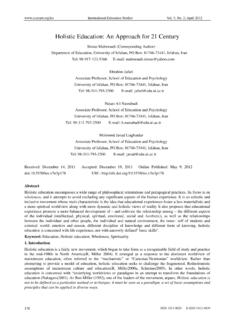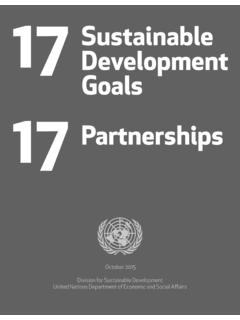Transcription of RACE TO SPACE - NASA
1 Race to SPACE 1/7 National Aeronautics and SPACE Administration *AP is a trademark owned by the College Board, which was not involved in the production of, and does not endorse, this product. RACE TO SPACE Background On May 25, 1961, President John F. Kennedy spoke before a special joint session of Congress and challenged the country to safely send and return an American to the Moon before the end of the decade. President Kennedy s vision for the three-year old National Aeronautics and SPACE Administration (NASA) motivated the United States to develop enormous technological capabilities and inspired the nation to reach new heights. Eight years after Kennedy s speech, NASA s Apollo program successfully met the president s challenge.
2 On July 20, 1969, the world witnessed one of the most astounding technological achievements in the 20th century. Neil Armstrong and Edwin Buzz Aldrin became the first humans to set foot on the Moon, while Mike Collins orbited the Moon in the Command Module. Armstrong s words, That s one small step for [a] man, one giant leap for mankind, were heard around the world and inspired a generation. This amazing accomplishment required the collaboration of hundreds of thousands of determined individuals and the committed resources of our nation. The race to SPACE was initiated on October 4, 1957 with the successful launch by the Soviet Union of Sputnik I.
3 Sputnik, the world's first artificial satellite, measured the size of a beach ball (58 cm or inches in diameter), weighed only kg ( lbs), and orbited the earth in 98 minutes on an elliptical path. Although relatively small in size, its impact was huge. Americans did not want to be left in the dust by the Soviet s technological advances. This was at the height of the Cold War and America also worried that the Soviets would use this technology for military purposes. Concerns over Soviet capabilities to launch nuclear weapons quickly emerged and heightened fears among Americans. Despite being economically overshadowed by the United States, the Soviet Union continued its ominous presence in the arms race and SPACE race.
4 A newly organized NASA met challenges along the way as they strived to meet the goal set by President Kennedy. Despite a rough start to catch the Soviet Union, the United States became the first country to conduct a manned lunar orbit in December of 1968 (Apollo 8). This was followed by the first lunar landing on July 20, 1969 (Apollo 11). The United States celebrated this victory as Kennedy s vision and the hope of a nation was fulfilled. For more information about NASA s Apollo program visit Race to SPACE 2/7 Document-Based Essay Question (DBQ) Directions The following question requires you to construct a coherent essay that integrates your interpretation of documents A J and your knowledge of the period referred to in the question.
5 High scores will only be earned by essays that both cite key pieces of evidence from the documents and draw on outside knowledge of the period. Question To what extent did the "race to SPACE " from 1957-1969 reflect political, social, and economic aspects of the Cold War? Use the documents and your knowledge of the time period 1957-1969 to construct your response. Document A Source: Leonard David. (October 2002). Sputnik 1: The Satellite That Started It All. Retrieved August 13, 2009, from Sputnik came as a surprise to most Americans - but it should not have, observes John Logsdon, Director, of the SPACE Policy Institute, Elliott School of International Affairs at George Washington University in Washington, Our movies and television programs in the fifties were full of the idea of going into SPACE .
6 What came as a surprise was that it was the Soviet Union that launched the first satellite. It is hard to recall the atmosphere of the time. Fallout shelters, rabid anti-Communism, a sense of imminent danger from without and within, Logsdon said. With the launch of the Soviet satellite, Logsdon said, the reaction was more fear than surprise, because it showed clearly that the United States was no longer safe behind its ocean barriers. The claim that who controlled SPACE would control the earth seemed plausible, and the Soviet Union had taken the first step towards that control, he said. Document B Source: Robert D. Launius. ( ). Sputnik and the Origins of the SPACE Age.
7 In NASA History Division. Retrieved September 2, 2009, from On that same evening of 4 October, Senate Majority Leader Lyndon B. Johnson ..heard the announcement of Sputnik 1's launch on the 's mind kept returning to the heavens as he pondered the Soviet triumph. He recollected, Now, somehow, in some new way, the sky seemed almost alien. I also remember the profound shock of realizing that it might be possible for another nation to achieve technological superiority over this great country of ours..One of Johnson's aides, George E. Reedy, summarized the feelings of many Americans: the simple fact is that we can no longer consider the Russians to be behind us in technology.
8 It took them four years to catch up to our atomic bomb and nine months to catch up to our hydrogen bomb. Now we are trying to catch up to their satellite. Race to SPACE 3/7 Document C Source: Library of Congress, Lyndon B. Johnson, Senate majority leader, Senate Armed Services Committee s Preparedness Subcommittee report, January 8, 1958. In essence, the Soviet Union has appraised control of SPACE as a goal of such consequence that achievement of such control has been made a first aim of national policy. [In contrast], our decisions, more often than not, have been made within the framework of the Government s annual budget. Against this view, we now have on record the appraisal of leaders in the field of science, respected men of unquestioned competence, whose valuation of what control of outer SPACE means renders irrelevant the bookkeeping concerns of fiscal officers.
9 Document D Source: Library of Congress, President John F. Kennedy, delivered in person before a joint session of Congress, May 25, 1961..Finally, if we are to win the battle that is now going on around the world between freedom and tyranny, the dramatic achievements in SPACE which occurred in recent weeks should have made clear to us all, as did the Sputnik in 1957, the impact of this adventure on the minds of men everywhere, who are attempting to make a determination of which road they should take. Since early in my term, our efforts in SPACE have been under review. With the advice of the Vice President, who is Chairman of the National SPACE Council, we have examined where we are strong and where we are not, where we may succeed and where we may not.
10 Now it is time to take longer strides time for a great new American enterprise time for this nation to take a clearly leading role in SPACE achievement, which in many ways may hold the key to our future on earth . First, I believe that this nation should commit itself to achieving the goal, before this decade is out, of landing a man on the moon and returning him safely to the earth . No single SPACE project in this period will be more impressive to mankind, or more important for the long-range exploration of SPACE ; and none will be so difficult or expensive to Race to SPACE 4/7 Document E Source: NASA Dr. William H. Pickering, Dr.













